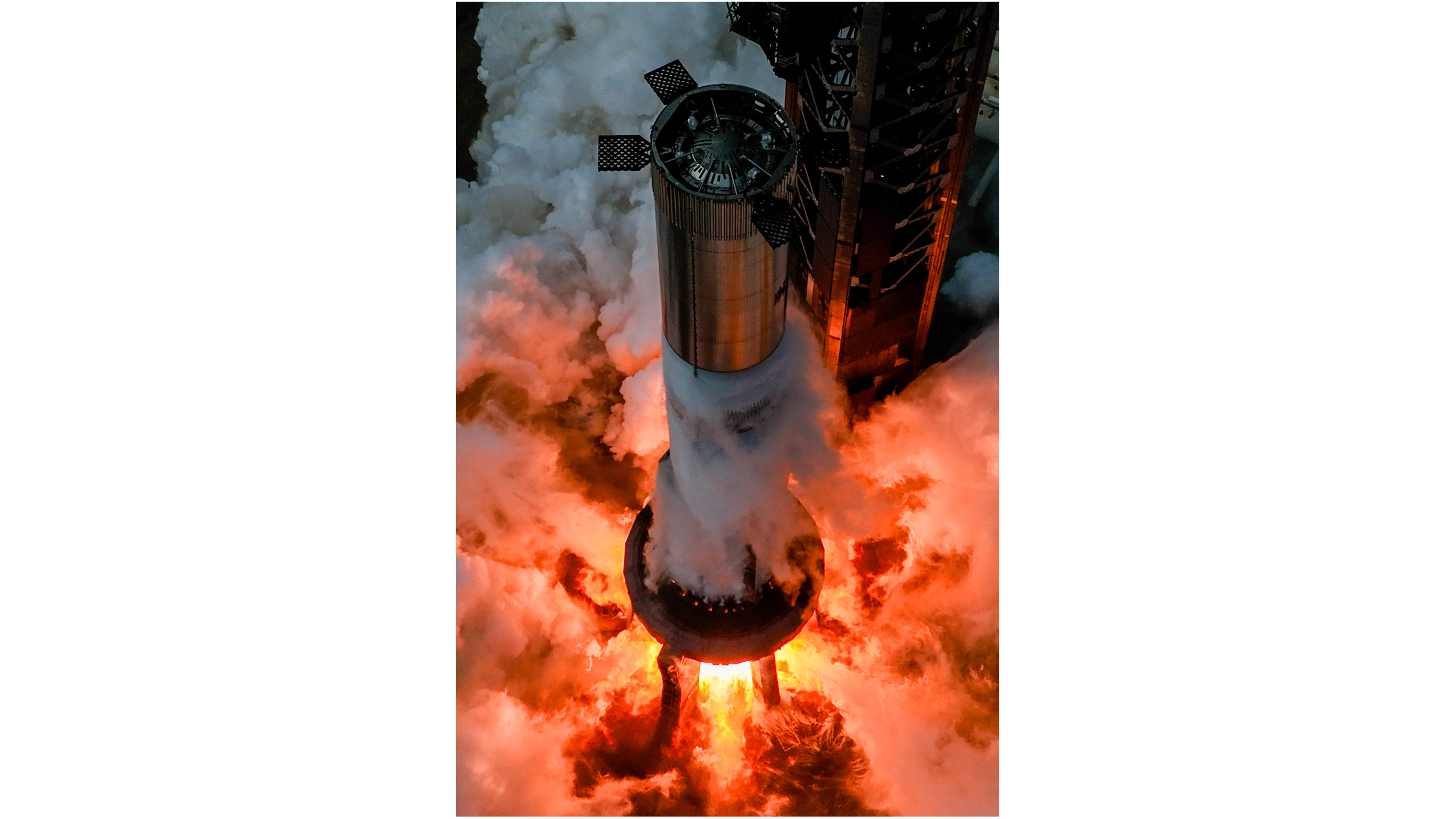
SpaceX is gearing up for the seventh test flight of its Starship megarocket, which could take place in just a month or so.
The company conducted a static-fire test with Flight 7's Super Heavy first-stage booster today (Dec. 9), briefly igniting its 33 Raptor engines at a pad at SpaceX's Starbase facility in South Texas.
The company documented the milestone on X today, posting three photos and a short video of the test.

SpaceX has not yet announced a launch date for Starship's seventh test flight, but the company appears to be eyeing Jan. 11; an email sent by NASA to the U.S. Federal Aviation Administration identifies that date as the target. (According to that email, NASA plans to deploy a Gulfstream V jet to observe the upcoming flight.)
Related: What's next for SpaceX's Starship after its successful 6th test flight?
Starship consists of two stainless-steel stages, both of which are designed to be fully and rapidly reusable. The upper stage is a 165-foot-tall (50 meters) spacecraft known as Starship, or just Ship.
When Ship is stacked atop Super Heavy, Starship stands about 400 feet (122 m) tall — bigger that any other rocket in history. Starship is also the most powerful launcher ever built, boasting nearly twice the liftoff thrust of NASA's Space Launch System moon rocket.

Starship's six test flights to date occurred in April and November of 2023 and March, June, October and November of this year.
The megarocket has performed quite well, especially on its last two missions. On each occasion, both Super Heavy and Ship made it to space as planned and survived their trip back down to Earth in one piece.

And, on Flight 5, Super Heavy returned safely to its launch tower, which caught the booster using its "chopstick" arms — the strategy SpaceX plans to use eventually for both Super Heavy and Ship, to make reflight as quick and efficient as possible.
SpaceX aimed to repeat the booster catch on Flight 6, but communication issues with the tower scuttled that try, and Super Heavy diverted to splash down in the Gulf of Mexico.







